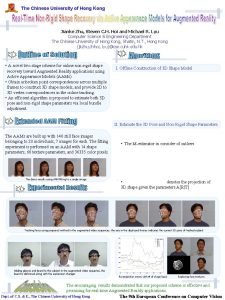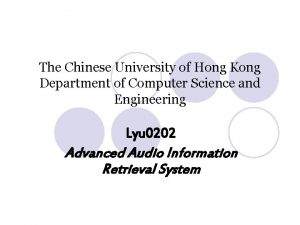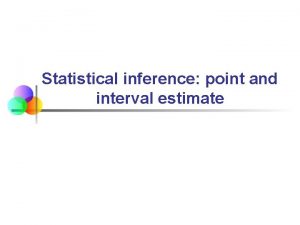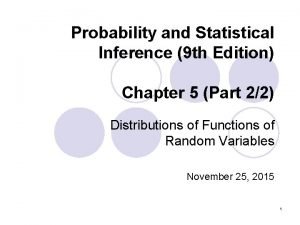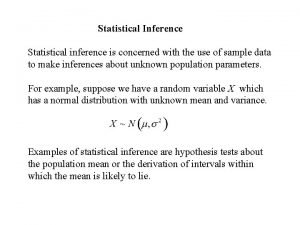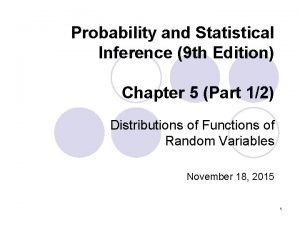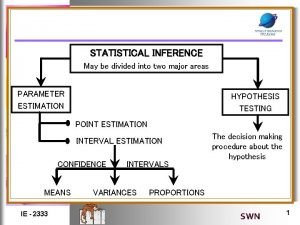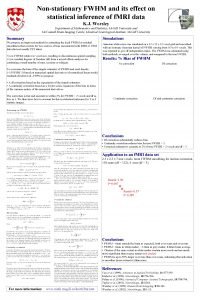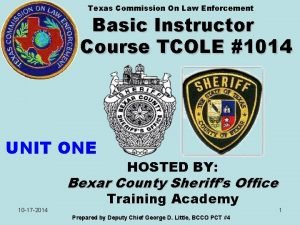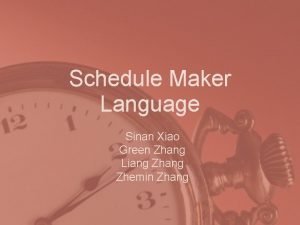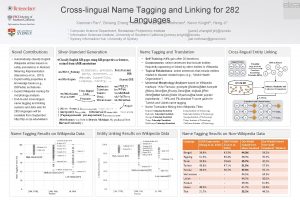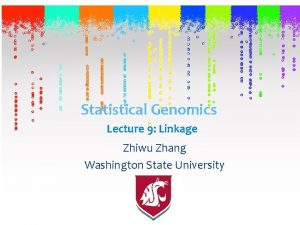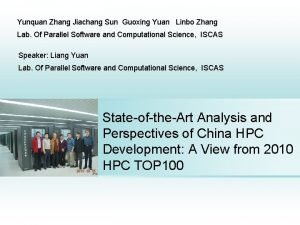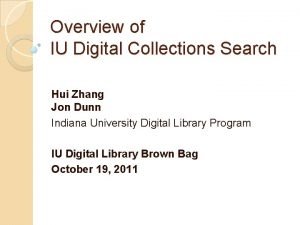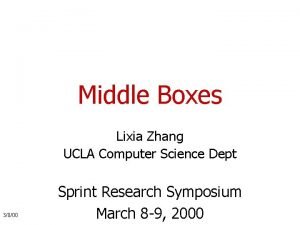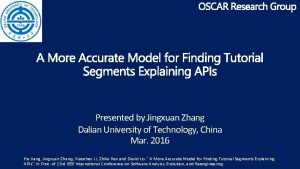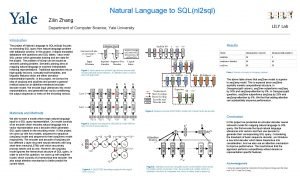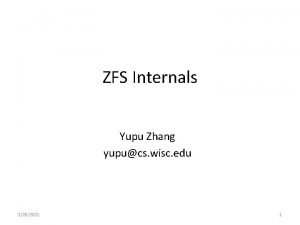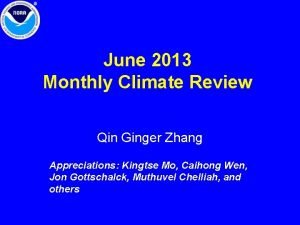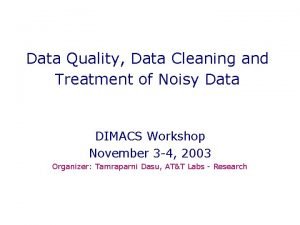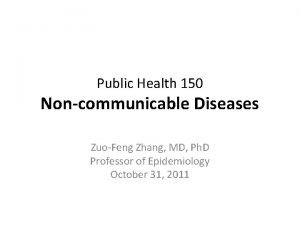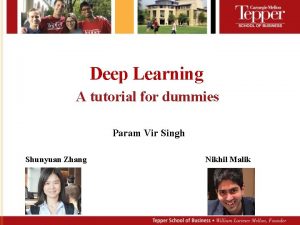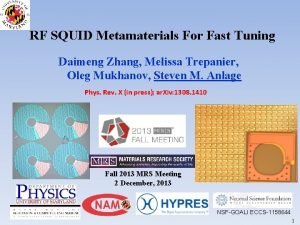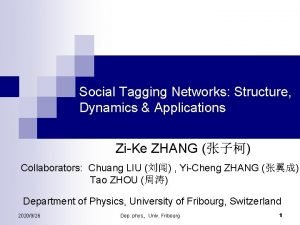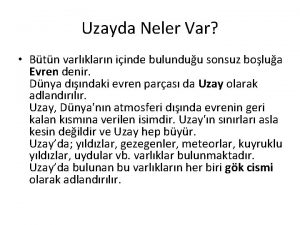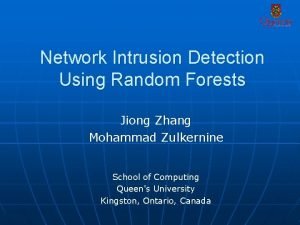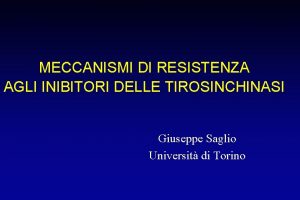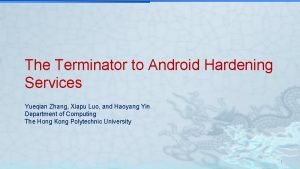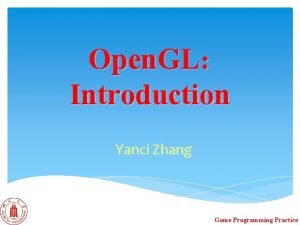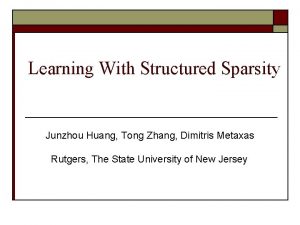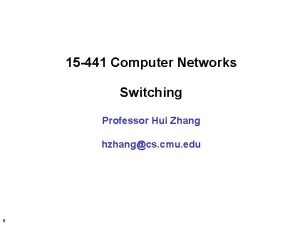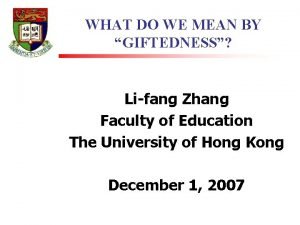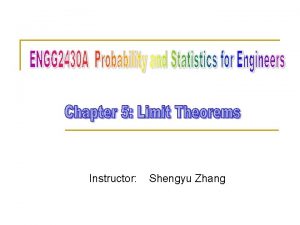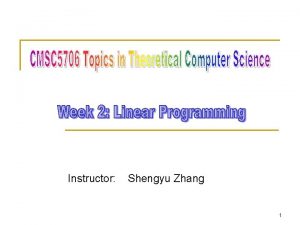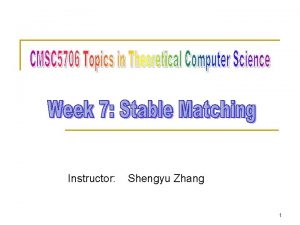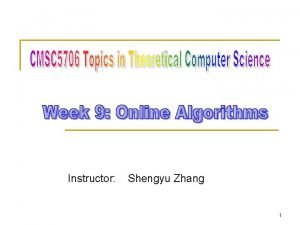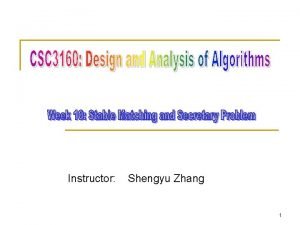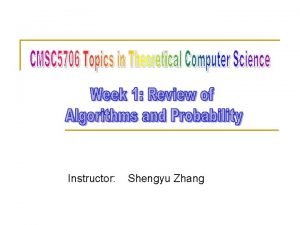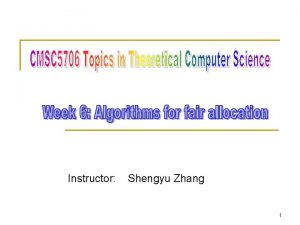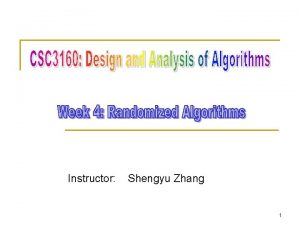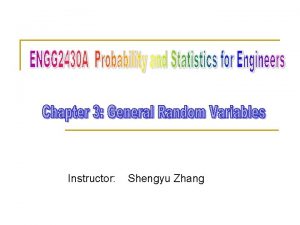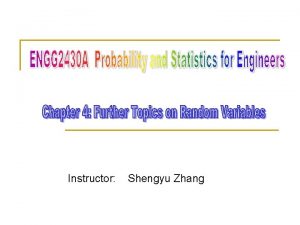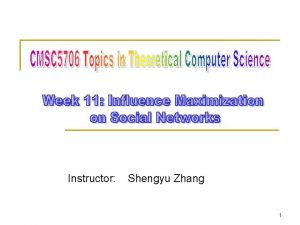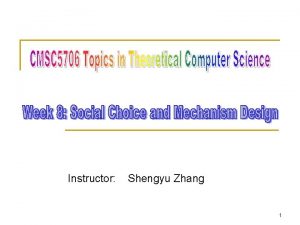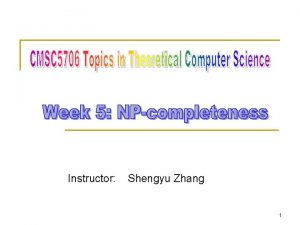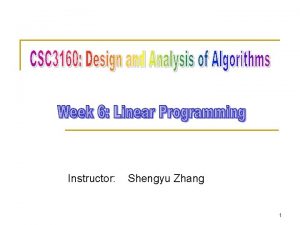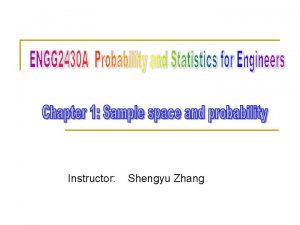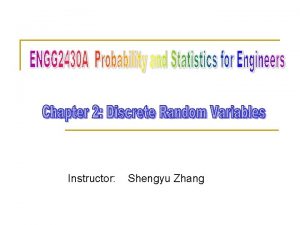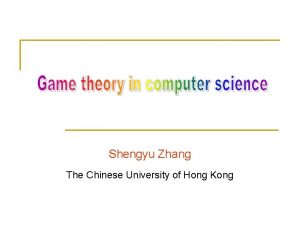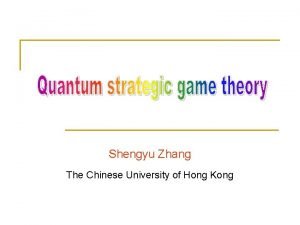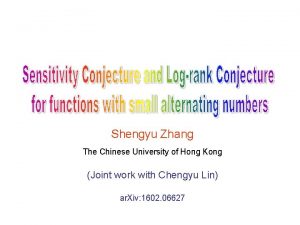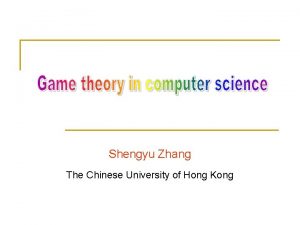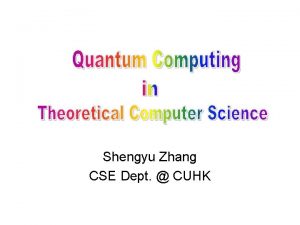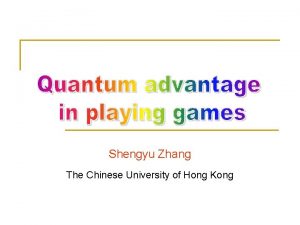Instructor Shengyu Zhang Statistical inference n Statistical inference








































































- Slides: 72

Instructor: Shengyu Zhang

Statistical inference n Statistical inference is the process of extracting information about an unknown variable or an unknown model from available data. n Two main approaches q q Bayesian statistical inference Classical statistical inference

Statistical inference n Main categories of inference problems q q q parameter estimation hypothesis testing significance testing

Statistical inference n Most important methodologies q q q maximum a posteriori (MAP) probability rule, least mean squares estimation, maximum likelihood, regression, likelihood ratio tests

Bayesian versus Classical Statistics n Two prominent schools of thought q q n n n Bayesian Classical/frequentist. Difference: What’s the nature of the unknown models or variables? Bayesian: they are treated as random variables with known distributions. Classical/frequentist: they are treated as deterministic but unknown quantities.

Bayesian n

Classical/frequentist n

Model versus Variable Inference n n Model inference: the object of study is a real phenomenon or process, … …for which we wish to construct or validate a model on the basis of available data q n e. g. , do planets follow elliptical trajectories? Such a model can then be used to make predictions about the future, or to infer some hidden underlying causes.

Model versus Variable Inference n Variable inference: we wish to estimate the value of one or more unknown variables by using some related, possibly noisy information q e. g. , what is my current position, given a few GPS readings?

Statistical Inference Problems n

Statistical Inference Problems n

Content n n Bayesian inference, the posterior distribution Point estimation, hypothesis testing, MAP Bayesian least mean squares estimation Bayesian linear least mean squares estimation

Bayesian inference n

Bayesian inference n

Bayesian inference n

Summary of Bayesian Inference n

Bayes’ rule: summary n

Example: meeting n

n

n

Example: Inference of common mean of normal n

n

Numerator n

n

n

n

Content n n Bayesian inference, the posterior distribution Point estimation, hypothesis testing, MAP Bayesian least mean squares estimation Bayesian linear least mean squares estimation

MAP n

n This is called the Maximum a Posteriori probability (MAP) rule.

n

Computational shortcut n

Example n

Point Estimation n

Two popular estimators n

Example: Romeo and Juliet meeting n

n

MAP vs. conditional expectation

Hypothesis testing n

n

Correct probability n

Example: binary hypothesis testing n

n

n

n

n

Content n n Bayesian inference, the posterior distribution Point estimation, hypothesis testing, MAP Bayesian least mean squares estimation Bayesian linear least mean squares estimation

Estimation without observation n

proof n


Estimation with observation n

n

n

Example n

n

n

n

Example: meeting n

n

n

n MAP has smaller estimator. n LMS estimator has uniformly smaller mean squared error.

Properties of estimation error n

n

Content n n Bayesian inference, the posterior distribution Point estimation, hypothesis testing, MAP Bayesian least mean squares estimation Bayesian linear least mean squares estimation

n n LMS estimator is sometimes hard to compute, and we need alternatives. We derive an estimator that minimizes the mean squared error within a restricted class of estimators: linear functions of the observations. This estimator may result in higher mean squared error. But it has a significant computational advantage. q It requires simple calculations, involving only means, variances, and covariances of the parameters and observations.

n

n

n

n

n

Example n

n

n
 Shengyu zhang
Shengyu zhang Shengyu zhang
Shengyu zhang Shengyu zhang
Shengyu zhang Interval estimate example
Interval estimate example Chebyshev inequality proof
Chebyshev inequality proof Statistical inference is concerned with
Statistical inference is concerned with Probability and statistical inference 9th solution pdf
Probability and statistical inference 9th solution pdf Statistical inference is divided into
Statistical inference is divided into Statistical inference
Statistical inference Instructor
Instructor Basic instructor course texas
Basic instructor course texas Medical terminology instructor
Medical terminology instructor Nrp instructor toolkit
Nrp instructor toolkit Basic instructor course tcole
Basic instructor course tcole Nra certified instructor logo
Nra certified instructor logo Tp 12863
Tp 12863 Instructor vs teacher
Instructor vs teacher Instructor office hours
Instructor office hours Neither of my two suitcases are adequate for this trip
Neither of my two suitcases are adequate for this trip Tcole advanced instructor course
Tcole advanced instructor course Ac 61-65
Ac 61-65 Basic instructor course #1014
Basic instructor course #1014 Basic instructor course #1014
Basic instructor course #1014 Basic instructor course texas
Basic instructor course texas Naismith was an instructor of
Naismith was an instructor of Instructor operating station
Instructor operating station Cisco certified instructor
Cisco certified instructor Jrotc marksmanship instructor course online
Jrotc marksmanship instructor course online Cisco instructor certification
Cisco instructor certification Tcole 1014 basic instructor course
Tcole 1014 basic instructor course The virtual instructor elements of art
The virtual instructor elements of art Tcole basic instructor course
Tcole basic instructor course Basic instructor course texas
Basic instructor course texas If your instructor were to ask if you cleaned up your room
If your instructor were to ask if you cleaned up your room Catia instructor
Catia instructor Mptc firearms
Mptc firearms Patricia mirror instructor
Patricia mirror instructor Lo más importante en la tipología de los participantes
Lo más importante en la tipología de los participantes Cbrf registry wi
Cbrf registry wi Marksmanship instructor
Marksmanship instructor Nfpa 1403 instructor to student ratio
Nfpa 1403 instructor to student ratio Delmar cengage learning instructor resources
Delmar cengage learning instructor resources Pepperball training manual
Pepperball training manual Tcole advanced instructor course
Tcole advanced instructor course Google zhang liang games
Google zhang liang games Boliang zhang
Boliang zhang Zhiwu zhang
Zhiwu zhang Guoxing sun
Guoxing sun Hui zhang indiana
Hui zhang indiana Lixia zhang ucla
Lixia zhang ucla Red means courage devotion uprightness bravery and loyalty
Red means courage devotion uprightness bravery and loyalty Ikaye zhang
Ikaye zhang Jingxuan zhang
Jingxuan zhang Zilin zhang
Zilin zhang Yupu zhang
Yupu zhang Ginger zhang
Ginger zhang Grace zhang morgan stanley
Grace zhang morgan stanley Zuofeng zhang
Zuofeng zhang Zuofeng zhang
Zuofeng zhang Yundong zhang
Yundong zhang Deep learning for dummies
Deep learning for dummies Squid
Squid Yunxi zhang
Yunxi zhang Zike zhang
Zike zhang Ikaye zhang
Ikaye zhang Pst2005
Pst2005 Zhang wang leukemia
Zhang wang leukemia Local lymph node assay
Local lymph node assay Jiagu 360
Jiagu 360 Yanci zhang
Yanci zhang Tong zhang
Tong zhang Hui zhang cmu
Hui zhang cmu Intellectual giftedness
Intellectual giftedness

